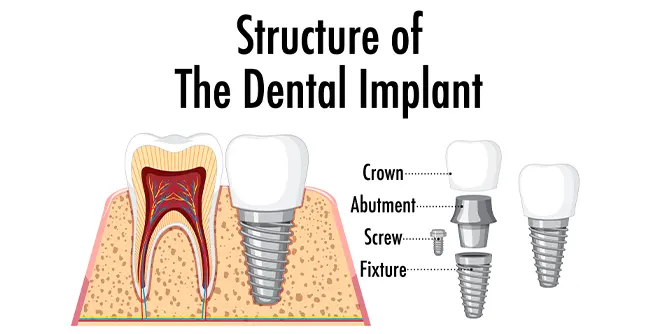
Implant
We are here to help when you need us.

Dental implants are a popular and effective solution for replacing missing teeth and restoring oral function, aesthetics, and overall oral health. They are a long-term option for tooth replacement and offer numerous advantages compared to other options like dentures or bridges. Here's an overview of dental implants:
1. Definition:** Dental implants are artificial tooth roots made of biocompatible materials, typically titanium, which are surgically placed into the jawbone. Once in position, they serve as a stable and durable foundation for attaching replacement teeth, such as crowns, bridges, or dentures.
2. Types of Dental Implants:
Endosteal Implants: These are the most common type of dental implants, consisting of screws or cylinders that are directly implanted into the jawbone. They provide a strong base for single crowns or bridges.
Subperiosteal Implants: These implants are placed under the gum but on, or above, the jawbone. They are suitable for patients who have insufficient bone height for endosteal implants.
3. Indications for Dental Implants: Dental implants are used to replace one or more missing teeth and can be utilized in various situations:
Single Tooth Replacement: For a single missing tooth, an implant and crown can be used.
Multiple Tooth Replacement: Implants can support a bridge to replace several adjacent missing teeth.
Full-Arch Replacement: Implants can support a full set of dentures, providing stability and preventing slippage.
All-on-4 and All-on-6: These are implant-supported full arches of teeth that are fixed in place and offer a permanent solution.
4. Surgical Procedure: The placement of dental implants involves a surgical procedure, usually performed by a periodontist or oral surgeon. The process includes:
Incision: An incision is made in the gum tissue to expose the jawbone.
Implant Placement: The dental implant is securely placed into the jawbone.
Healing Period: Over several months, the implant integrates with the bone in a process called osseointegration, which provides stability.
Abutment Placement: Once osseointegration is complete, an abutment is attached to the implant. This serves as a connection point for the replacement tooth.
Prosthesis Attachment: The custom-made replacement tooth (crown, bridge, or denture) is attached to the abutment.
5. Advantages of Dental Implants:
Natural Appearance: Dental implants look and feel like natural teeth, providing an aesthetically pleasing result
Durability: Implants are a long-lasting solution, often lasting a lifetime with proper care.
Improved Function: They restore full chewing and biting functionality.
Bone Preservation: Implants help preserve the jawbone's density and prevent bone loss, a common issue with tooth loss.
Convenience: Implants don't require special maintenance or removal, unlike dentures.
Speech Improvement: Implants prevent speech difficulties associated with missing teeth or loose dentures.
6. Maintenance:** Caring for dental implants involves regular oral hygiene practices, including brushing, flossing, and professional dental check-ups.
7. Cost:** The cost of dental implant treatment can vary widely depending on factors such as the number of implants, the type of prosthesis, and any additional procedures required (such as bone grafts). Dental insurance coverage for implants varies, so it's essential to check your plan's terms.
Dental implants have revolutionized tooth replacement options and have become a preferred choice for many people seeking a permanent and natural-looking solution for missing teeth. To determine if you are a suitable candidate for dental implants and to receive personalized treatment recommendations, it's essential to consult with a qualified dental or oral surgeon. They can evaluate your oral health and discuss the best treatment plan for your specific needs and goals.








